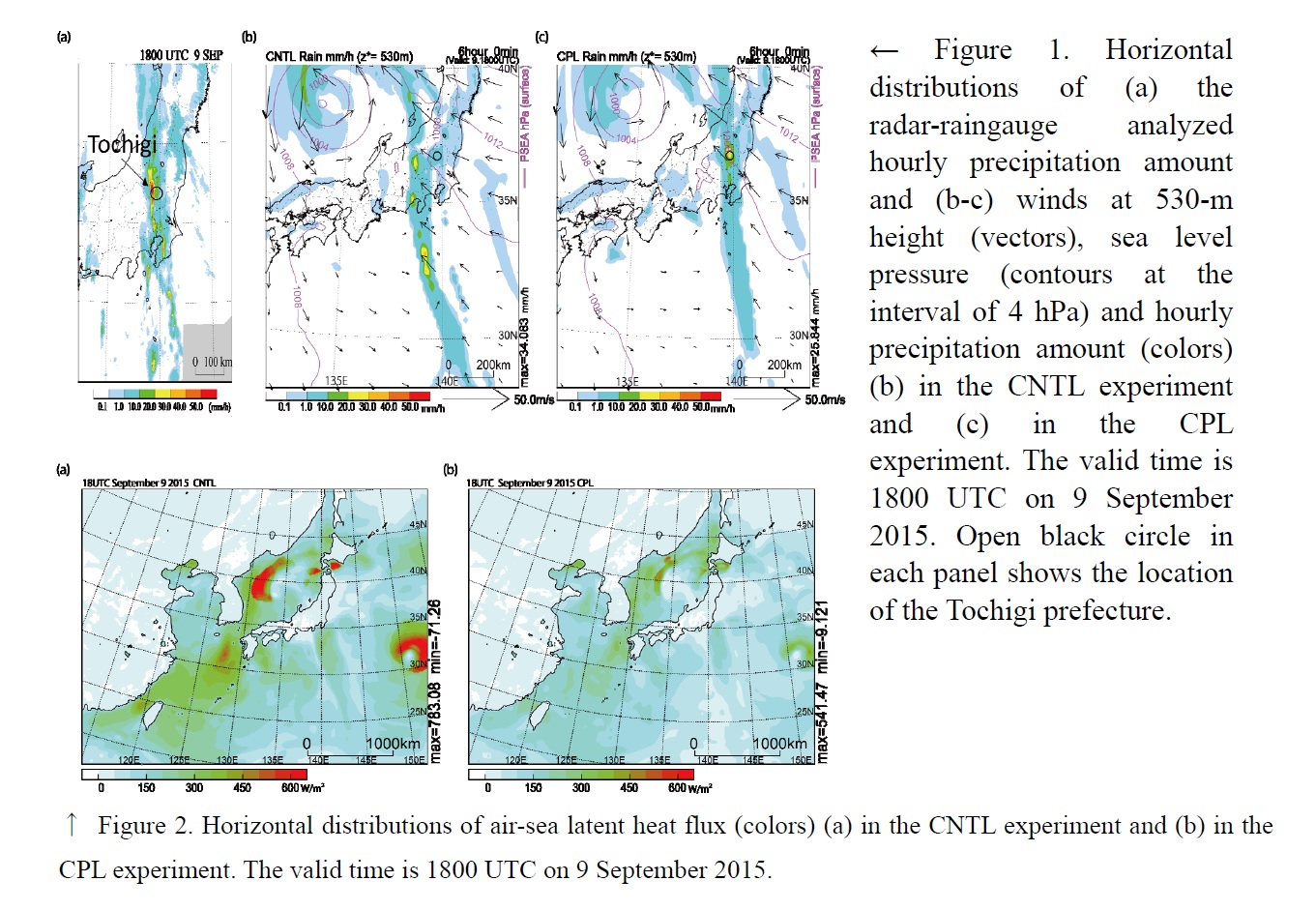Graphical Abstract
Wada, A., H. Tsugiti, K. Okamoto, and N. Seino, 2019: Air-sea coupled data assimilation experiment for Typhoons Kilo, Etau and the September 2015 Kanto-Tohoku Heavy Rainfall with the Advanced Microwave Scanning Radiometer 2 sea surface temperature. J. Meteor. Soc. Japan, 97, 553-575.
Special Edition on Tropical Cyclones in 2015–2016
https://doi.org/10.2151/jmsj.2019-029
Graphical Abstract with highlights
Plain Language Summary: This study investigated the influence of sea surface temperature (SST) on the September 2015 Kanto-Tohoku heavy rainfall event using a regional air-sea strongly coupled data assimilation system. The air-sea coupled system improved the analysis of SST, air-sea latent heat fluxes, lower-atmospheric components and the stationary linear convective system including local torrential rain occurred around 37°N in the Tochigi prefecture.
Highlights:
- The analysis of sea surface temperature (SST) is improved by air-sea strongly coupled data assimilation system with the Advanced Microwave Scanning Radiometer 2 (AMSR2) Level 2 (L2) SST for Typhoons Kilo, Etau and the September 2015 Kanto-Tohoku heavy rainfall.
- The coupled data assimilation system with AMSR2 L2 SST led to improvement of the analysis of air-sea latent heat flux and the atmospheric components in the lower troposphere.
- The coupled data assimilation system with AMSR2 L2 SST successfully reproduced a stationary linear convective system extending north to south between Typhoon Kilo and the extratropical cyclone transited from Typhoon Etau in 2015.
- Changes in the synoptic-scale SST field did affect the location of the stationary linear convective system with embedded local torrential rain through a change of the location of lower-tropospheric convergence area between the cyclonic circulation associated with Etau and easterly lower-tropospheric winds.







